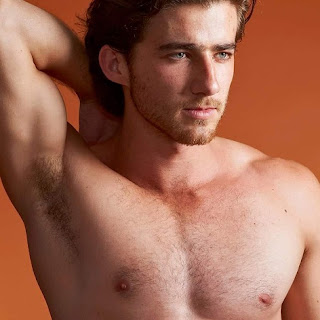I don't usually watch reality tv, but I was drawn to Catfish Mexico on Hulu (originally on MTV Mexico), about snooping out lying and misrepresenting social media profiles, because two of the nine episodes seem to be about same-sex couples. Besides, who knew that the term "catfish" was common in Spanish?
Episode 3: Antonio y Jauvier.
The Catfish Hunters, Chapu (left) and Badalt (below), in their hotel room in Mexico City. They scope out today's case: Antonio, age 23. an aspiring model from Cuernavaca. He met Jauvier on the internet six months ago, and they continue to talk every night at exactly 11:11 pm. But Jauvier won't give his last name, or any social media information. Sometimes the conversations last for an hour, but Jauvier never reveals any personal details, except for an occasional hint: "I have to go study." So he's a student, and probably Antonio's age. But who is he? Why the secrecy? Why the 11:11 pm fetish?
1. Badalt and Chapu drive to Cuernavaca to interview Antonio in person, and get more detailed information. He is afraid that maybe this six-month long relationship is just a prank.
2. They check out the photos that Jauvier sent: his hands, a huge tattoo, a field, and a few face shots. Who else has them? After some back-searching, they find Andres, who agrees to be interviewed via Skype. The face shots are of a famous instagram influencer named Jhesus Aramburo. Could he be the mysterious Jauvier?
3. Now it's time to Skype the influencer. Nope, he's never heard of Antonio. So Jauvier is sending Antonio -- and maybe others -- the influencer's pictures. Could he contact Antonio and tell him? Sure.
4. Next they interview Antonio's friend Valeria (in person,for a change). She thinks that the mysterious Jauvier is Antonio's ex, Emanuel. They had a bad breakup, so maybe Emanuel is trying to "get even." They can't find Emanuel's contact information online, but Valeria says that he hangs out at McCarthy's Irish Bar in Cuernavaca. So....
5. McCarthy's is not a gay bar, but I guess we're living in a post-gay world. Nope, no one at McCarthy's recognizes the photo of Emanuel, except one guy who tells them that he's seen him jogging on Lomas Street early in the morning. So....
6. Early the next morning, they cruise down Lomas. Lots of joggers, but none are Emanuel...wait, there he is! Commercial break
Emanuel scoffs at their story: Antonio is too naive. Who falls in love with someone online? No, he's not the mysterious Jauvier: he and Antonio broke up six months ago, and haven't been in contact since.
Then why, in one photo, is Jauvier wearing a ring identical to yours? It's a class ring. Lots of people have one. What about the tattoo? Wouldn't Antonio know whether the tattoo belonged to his ex or not?
Emanuel doesn't have any tattoos, but some of his friends do. He checks out the photo: it's his new boyfriend, Victor!
So Victor is catfishing his boyfriend's ex!
7. Emanuel, Antonio, and the Catfish Hunters all meet in a cafe to confront Victor. But he refuses to explain why he did it until Emanuel leaves. Then: "When I started dating Emanuel, I suspected that he was cheating on me with other guys. And one of them was Antonio. So I started catfishing him. Then we fell in love, but I couldn't tell him who I really was." Wait -- Victor started dating Emanuel before the breakup with Antonio?
8. The next day the Catfish Hunters arrange another meeting between Antonio and the Catfisher. He apologizes, and wants to continue the relationship. Heck, no! Antonio throws him to the curb.
Follow-up: They interview Antonio a month later. He's dating the old-fashioned way, by actually meeting people face-to-face. And Victor: he's no longer catfishing. The end.
Post-Gay World: Gay and straight are not differentiated at all. Boyfriends are boyfriends.
Pacing: A little off: there's no reason to meet with someone, interview them, and then say "Let's go somewhere quieter," change locations, and interview them again.
Big Mystery: The significance of 11:11 is never explained.
Big Reveals: I was getting a little Jerry Springer style "I'm cheating on you with your ex!" vibe.
Happy Endings: I was expecting a happy ending, but really, after six months of catfishing and cheating, who would continue the relationship? Being "happily single" is good enough.
My Grade: B
















